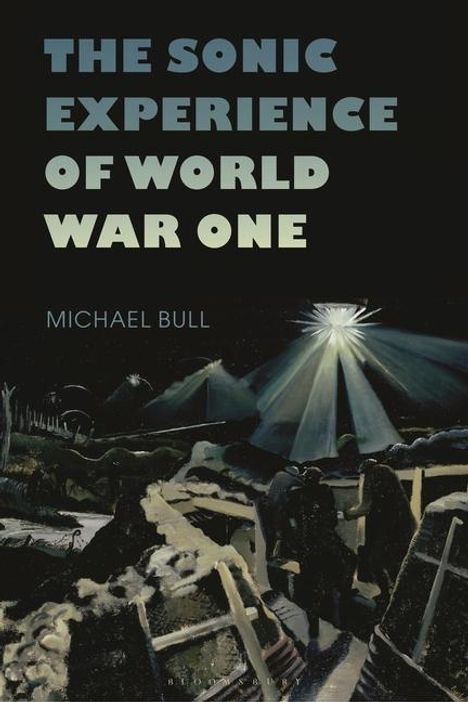Michael Bull: The Sonic Experience of World War One, Gebunden
The Sonic Experience of World War One
Sie können den Titel schon jetzt bestellen. Versand an Sie erfolgt gleich nach Verfügbarkeit.
- Verlag:
- Bloomsbury Publishing Plc, 04/2026
- Einband:
- Gebunden
- Sprache:
- Englisch
- ISBN-13:
- 9781501366284
- Artikelnummer:
- 10963343
- Umfang:
- 224 Seiten
- Gewicht:
- 454 g
- Maße:
- 229 x 152 mm
- Stärke:
- 25 mm
- Erscheinungstermin:
- 2.4.2026
- Hinweis
-
Achtung: Artikel ist nicht in deutscher Sprache!
Klappentext
While World War One has left little sonic trace other than the popular music of the time, the sounds of the war extended beyond sounds of entertainment and into the killing fields of the Western Front, the oceans of the world, and for the first time into the skies with the development of aviation. But beyond this, they entered into peoples homes, their streets, and indeed their thoughts, emotions, and feelings.
Book-length studies exist on the sounds of many other recent major wars, but there is a lack of sonic coverage of World War One. Here, Michael Bull investigates the sounds of war as experienced by those who participated in it by drawing upon a wide range of written testament of the time. These written "voices" are subjective, living memories expressed as fragmentary, often unreliable testimony but provide us with the only living sonic testimony of the time. The book filters these accounts through the technologies of "total war," from the trench whistle to the tank, from the newly developed airplane to the submarine.
The Sonic Experience of World War One interrogates: how did the wartime population experience these sounds and what were the physical and cognitive consequences of the implementation and use of these often invasive technologies of destruction, instruction and sometimes protection? In doing so, the the book re-evaluates just how we should understand the sounds of World War One and the sounds of war more generally.




